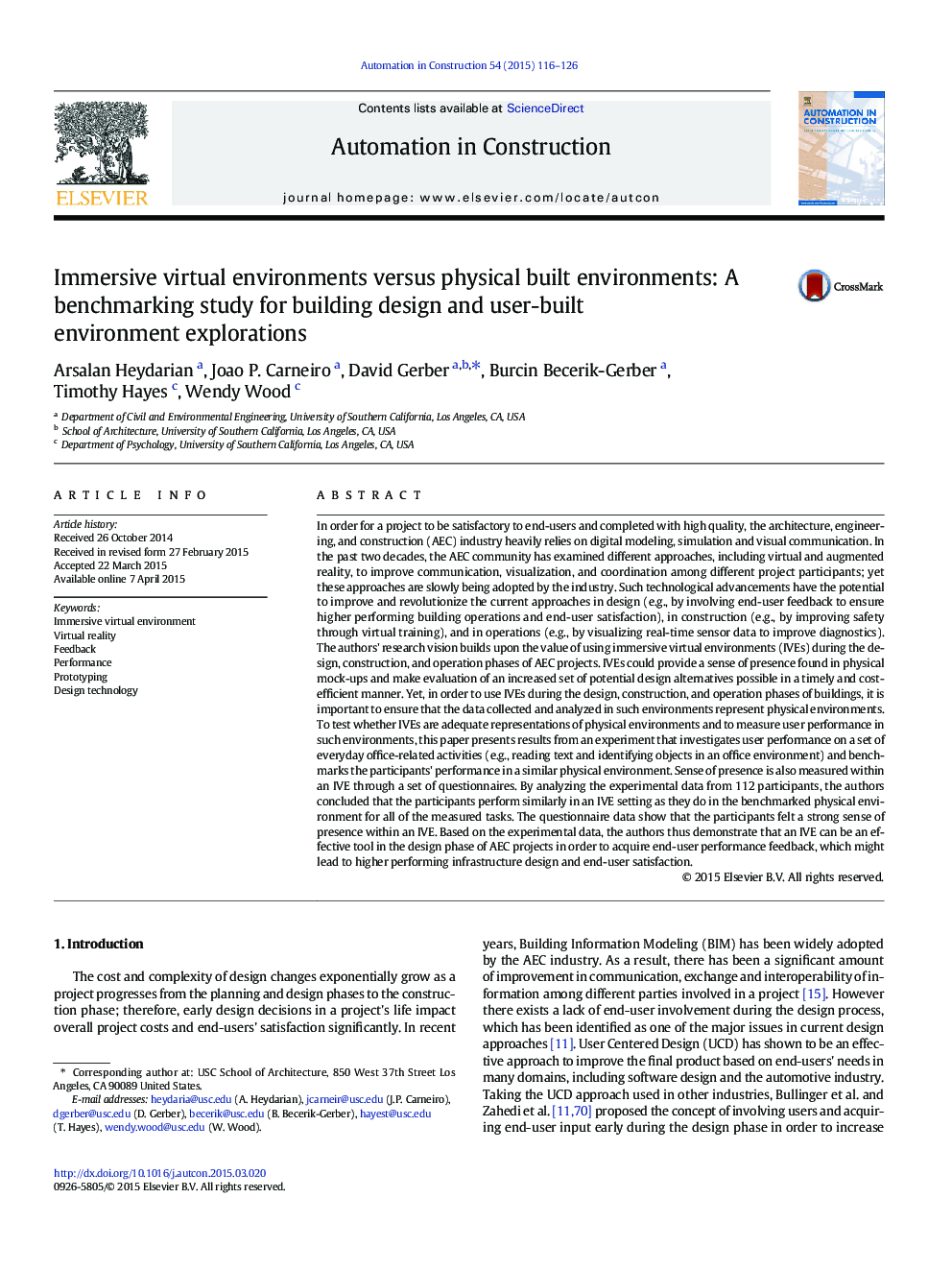| کد مقاله | کد نشریه | سال انتشار | مقاله انگلیسی | نسخه تمام متن |
|---|---|---|---|---|
| 246329 | 502361 | 2015 | 11 صفحه PDF | دانلود رایگان |
• Office-related performance is similar in IVE and physical environments.
• Sense of presence in IVE is strong and similar to physical environment.
• IVE can be used to gain end-user feedback to improve design evaluation process.
• IVEs are effective tools to measure human behavior in real-world settings.
In order for a project to be satisfactory to end-users and completed with high quality, the architecture, engineering, and construction (AEC) industry heavily relies on digital modeling, simulation and visual communication. In the past two decades, the AEC community has examined different approaches, including virtual and augmented reality, to improve communication, visualization, and coordination among different project participants; yet these approaches are slowly being adopted by the industry. Such technological advancements have the potential to improve and revolutionize the current approaches in design (e.g., by involving end-user feedback to ensure higher performing building operations and end-user satisfaction), in construction (e.g., by improving safety through virtual training), and in operations (e.g., by visualizing real-time sensor data to improve diagnostics). The authors' research vision builds upon the value of using immersive virtual environments (IVEs) during the design, construction, and operation phases of AEC projects. IVEs could provide a sense of presence found in physical mock-ups and make evaluation of an increased set of potential design alternatives possible in a timely and cost-efficient manner. Yet, in order to use IVEs during the design, construction, and operation phases of buildings, it is important to ensure that the data collected and analyzed in such environments represent physical environments. To test whether IVEs are adequate representations of physical environments and to measure user performance in such environments, this paper presents results from an experiment that investigates user performance on a set of everyday office-related activities (e.g., reading text and identifying objects in an office environment) and benchmarks the participants' performance in a similar physical environment. Sense of presence is also measured within an IVE through a set of questionnaires. By analyzing the experimental data from 112 participants, the authors concluded that the participants perform similarly in an IVE setting as they do in the benchmarked physical environment for all of the measured tasks. The questionnaire data show that the participants felt a strong sense of presence within an IVE. Based on the experimental data, the authors thus demonstrate that an IVE can be an effective tool in the design phase of AEC projects in order to acquire end-user performance feedback, which might lead to higher performing infrastructure design and end-user satisfaction.
Figure optionsDownload as PowerPoint slide
Journal: Automation in Construction - Volume 54, June 2015, Pages 116–126
